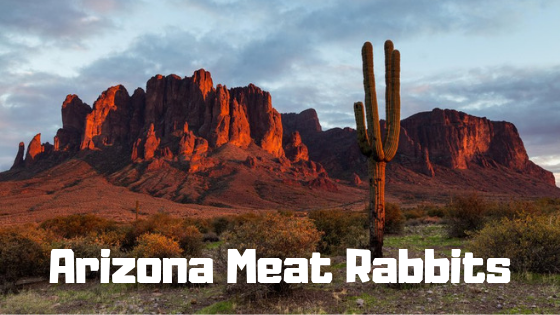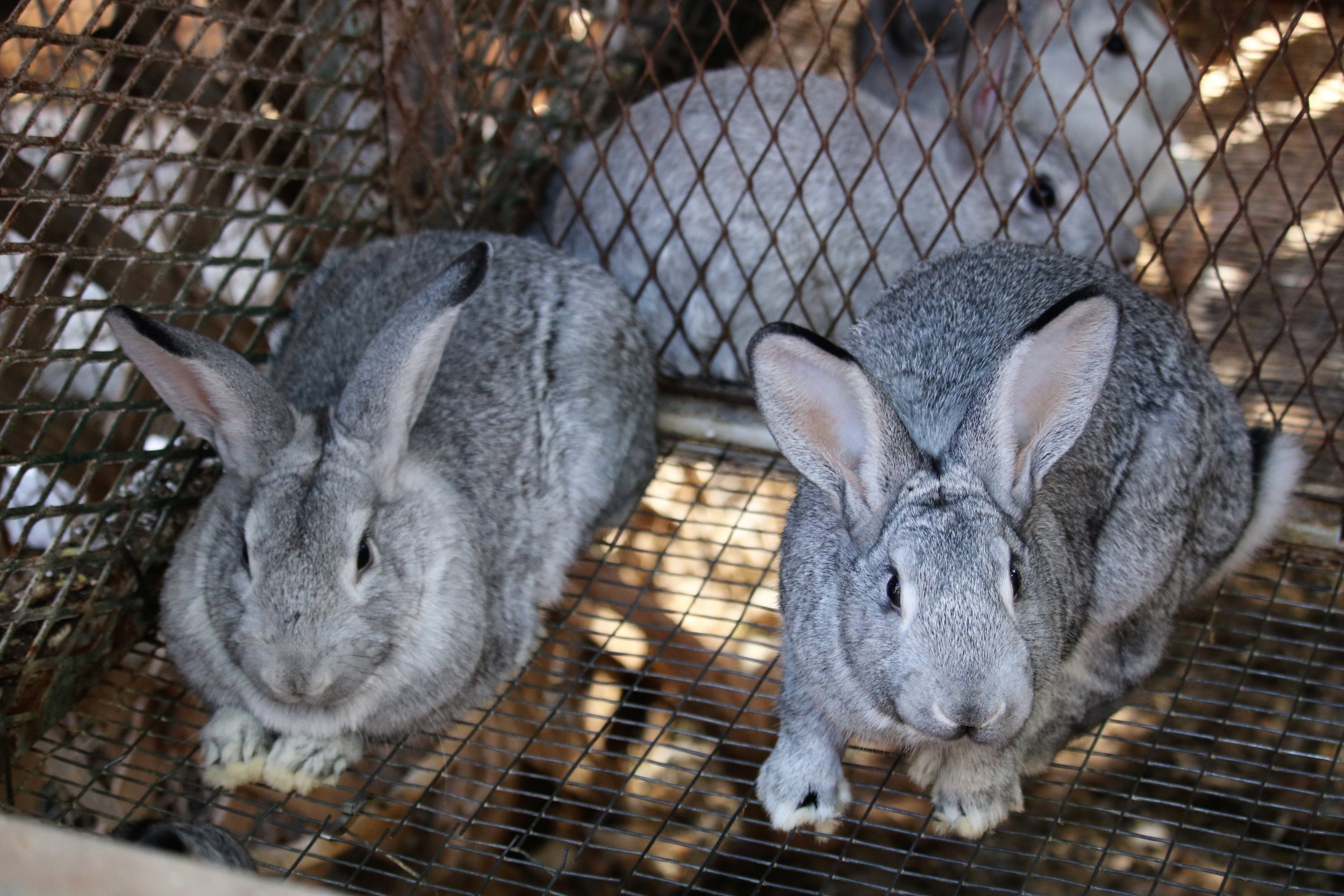Arizona Meat Rabbits
Arizona definitely is a unique place to raise meat rabbits. The hot summers make outdoor rabbit husbandry difficult, but not impossible. The miserable June through August months can hit 120 degrees, true, but that hasn't stopped the 2000 years of farming this valley has seen.

Ancient Arizona Farmers
When modern settlers founded Phoenix AZ, they built it from the bones of the ancient Hohokam civilization. The Hohokam settled around 1 AD and by 500AD they had a vast canal system, enabling them to effectively farm the land... They must have gotten fed up with the heat, though, because they disappeared about 1450, leaving evidence that agriculture COULD be effective in the valley of the sun. Since the 1950s, humanity has been blessed with the gift of refrigeration... Oh that glorious invention making the desert much more livable. It also makes raising rabbits much easier.
Meat Rabbit Environment
Rabbits should be kept in environments that maintain a temperature under 90 degrees. Their immune system drops at 85 and they go into shock at 90. Rabbits in the wild just dig burrows and stay cool in the ground. You can raise rabbits in colonies to mimic this behavior, but there are some downsides discussed here.
The most efficient way to raise rabbits is in specialized rabbit cage systems. Granted that means you are now responsible for the rabbits' comfort and environmental conditions. There are some ways to keep them cool on the cheap.
Cooling Solutions
Option #1
The first inexpensive cooling solution is very simple: Mister, fan and frozen water bottle. By setting up a mister in front of a fan, you moisten the dry air and manufacture a cool breeze. The frozen water bottle sits in the cage with the rabbit, giving the rabbit a cool surface to lay against. The rabbits will love it. Their ears act as radiators, pushing warm blood up into the thin ears to be cooled and return the cooler blood to the body. The downside to misters is the malfunctions, the wet mess, and the possible skin conditions your rabbits could get from being wet.
You need to watch and make sure the rabbits are NOT wet with the mist, the mist should be mostly evaporated before getting to the rabbits. Watch your hose fittings as well, you don't want to flood lower cages, and trudging through wet ground isn't fun either. Too much mist will also rust cages. My first summer raising rabbits in Arizona, I had misters and a fan on 5 cages and they bred all summer long. The cost of the fan electricity and water used is minimal.
Option #2
A more efficient moistening fan system is the evaporative cooler or swamp cooler. Swamp coolers are effective in arid climates. An internal fan pulls outside air through a damp pad adding cool moisture to the air. The cool, moist air is then pushed into your rabbit building. This system was the second I used. The swamp cooler effectively kept 50 does breeding all summer long. In fact, the does closest to the air inlet developed thick, soft pelts because of the temperature. The downside to evaporative cooling is that it is ineffective during the most humid months of the year. As the humidity increases outside, the air coming in is already saturated with warm moister. The cost of usage is similar to the misters and fans.
Option #3
When I built the 128 doe facility, I put A swamp cooler on and an air conditioning unit. The swamp cooler would run most of the year and at night during the most humid months, then the AC would run during any day the swamp cooler was ineffective. The cost of usage is substantially more, but marginal considering the output of the 128 does.

If you find yourself in Arizona, or any other arid desert, know that you can still raise meat rabbits. With a little enguinuity, or minor investments in proper equipment, youll be able to habdle the heat and produce sustainible, clean meat!
Be sure to check us out on Facebook, Instagram, Twitter, Tumblr

